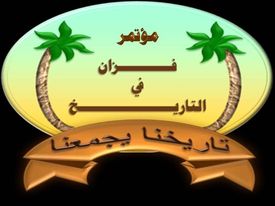Oases and commercial caravan stations in the Fezzan region from the introduction of Islam to it in the first century AH / seventh century until the beginning of the sixteenth century AD
Main Article Content
Abstract
The Fezzan site in the Libyan desert represented an important center and link between the different regions that have to pass through it to reach each other, such as the eastern regions in Egypt and northern Africa, which are continuing with Europe and the central and western African continent, and despite the harshness of the desert, the desert oases acted as a coolant to the atmosphere and to enhance the communication process For convoys passing through them to all parts of the continent, where they formed a safe haven, which earned the continent an important place in the process of connecting all its destinations. North Africa and sub-Saharan Africa are two economically complementary regions, and the Libyan oases - such as: Awjila, Gallo, Kufra, Murzuq, Ghat, Ghadames ... and others - played an important role in the communication process and in stimulating trade exchange. What interests us here is the study of oases located within the Fezzan region and their taking the role of commercial terminals for caravans crossing the Sahara, thanks to which the cities in their path and within the region itself developed. Traveler's books and historical sources talk about the existence of economic relations between the northern regions of the continent and central Africa in the period of the Islamic era, which was a direct reason for its prosperity after the conquest of Egypt and North Africa. The roads through Fezzan were the main routes for the delivery of Sudanese goods, most notably slaves, towards North Africa and Egypt
Downloads
Article Details
Plagiarism policy
Sebha University Journal respects intellectual property and aims to protect the original work of authors applying for publication. In general, the laws of the magazine are inconsistent with scientific articles that contain stolen materials and are not bound by the standards of quality, research and innovation. Applicants for publication to the journal must adhere to ethical standards and refrain from plagiarism in any way. In the event that any plagiarism or scientific theft of an article submitted for publication is found, the journal will contact the author to provide their interpretation within two weeks of its date, after which it will be referred to the relevant committees formed for this purpose to take strict measures. about that. In general, the journal’s license allows the citation of the content published on its website and the download of all files.




